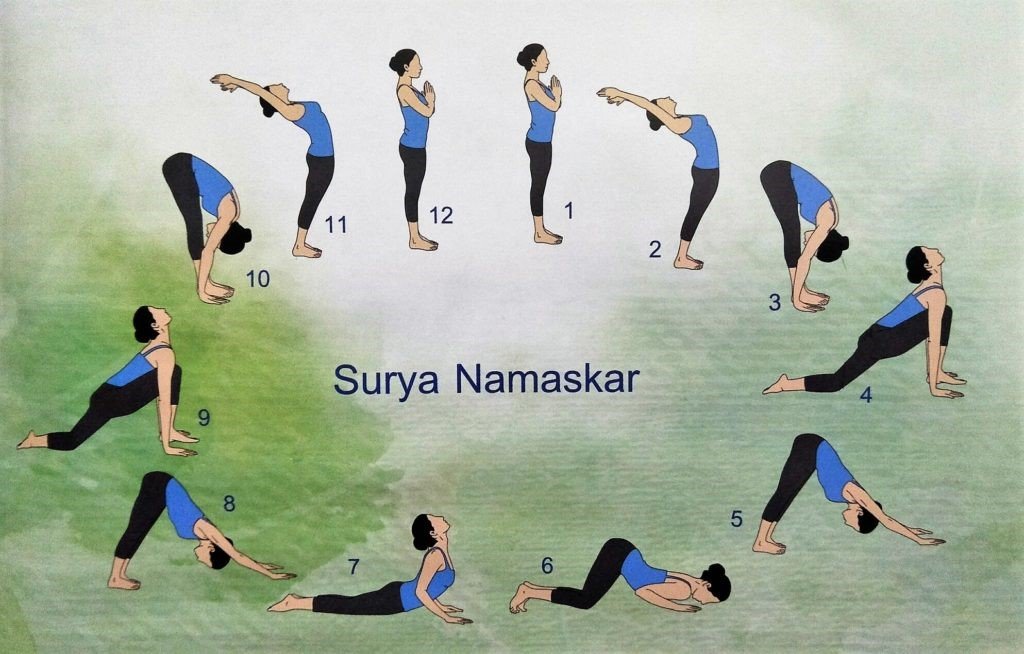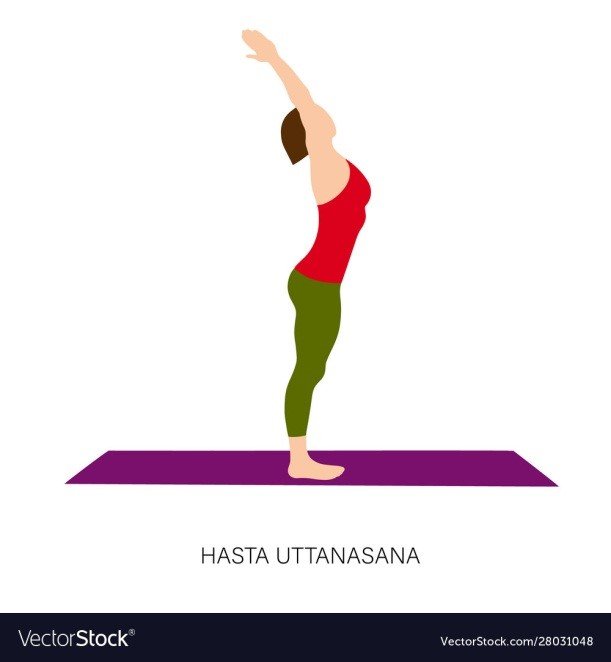A fantastic corporate life is a great fantasy that everybody on the planet can achieve. However, this desire comes at a price, namely, one’s health, because it entails a frantic, energy-draining, and fatigue-inducing daily routine. As a result, today’s ultra-modern working professionals have little time to unwind – let alone exercise. Sparing an hour or two appears to be an insurmountable task.
Since the beginning of time, the Sun has been a source of spirituality and energy on the Earth. Its significance may be traced back to the Mayans, Egyptians, Aztecs, Tibetans, and Indians, as well as later cultures. Apart from spirituality, the sun’s prominence has a logical explanation.
One of the finest ways to start your day off right is to do the sun salutation (surya namaskar) first thing in the morning. Surya namaskar, also known as sun salutation, is a 12-pose yoga sequence that flows from one to the next with rhythmic breathing. Surya namaskar’s 12 poses are each intended to provide a specificbenefit to the body. The sequence can help you enhance your cardiovascular health, increase your blood circulation, reduce stress, and detox your body, among other things.
According to science, the sun radiates energy to the earth in the form of heat and sunshine, which is essential for life to exist on this planet. Taking 10 minutes each day for yourself can make a significant difference in numerous facets of your life. As a result, Surya Namaskar, or Sun Salutation, has a variety of physiological consequences.
Even if your schedule is chaotic – ranging from board meetings to late-night assignments, brainstorming sessions to company development initiatives, and so on — dedicating time to Surya Namaskar every morning ensures that you have a set timetable that you can't change. Despite the dynamism that pervades your life, it provides better stability.
It is also a full-body workout. Estimate how many calories you’ll burn following a 30- minute workout. Lifting weights burns around 199 calories, tennis burns about 232 calories, football burns about 298 calories, rock climbing burns about 364 calories, and running burns about 414 calories. Guess how many calories Surya Namaskar expels. 417.
So, theoretically, 10 minutes of Surya Namaskar equals 139 calories burned, which is more than you’d burn even if you swam for 10 minutes. Surya Namaskar, often known as “The Ultimate Asana,” helps to strengthen your back and muscles while also lowering blood sugar levels. It also helps women maintain a regular menstrual cycle by improving metabolism and blood circulation (resulting in glowing skin).
How To Perform?
Surya Namaskar is made up of 7 asanas that are performed in a cyclic order, resulting in a total of 12 asanas. The following are the details:
1. Pranamasana: Surya Namaskar begins with a standing prayer stance to greet the Sun God. It aids in the relaxation of your body and mind.
2. Hastauttanasana (The Raised Arm): The hands are gradually lifted and the spine is bowed backwards in this asana. Inhale slowly and bring your biceps up to your ears. The asana serves to expand your chest and belly while also directing your energy flow to your upper body.
3. Padahastasana (Forward Bend): Padahastasana massages your tummy after stretching your abdominal region. This aids your digestion while also increasing blood flow to your brain. Simply exhale, bend, and aim to touch the floor with your hands while maintaining a straight spine. Make sure you’re exhaling slowly and deeply. The asana also plays a role in eliminating female disorders.
4. Ashwa Sanchalanasana (Low Lunge): This asana extends your spine, quadriceps, and iliopsoas muscles even farther. It also activates the organs in your abdomen.
Begin bending your knees towards the right side of your chest while moving your left leg rearward after Padahastasana. You may rely on the ground for assistance.
Raise your brows and look ahead. Also, remember to inhale at all times.
5. Parvatasana (Mountain Pose): This pose strengthens your arms and legs while also relieving varicose veins. The calf and spine muscles are also stretched in Parvatasana. Exhale and elevate your waist to form a inverted “V” shape with your body. Keep your heels on the ground as much as possible.
6. Dandasana (Plank Pose) : The dandasana strengthens your back muscles and spine while improving your posture. It stretches your shoulders and chest as well.
While inhaling, bring your parvatasana stance forward and perform a plank. Ascertain that both hands are just below your shoulders and that your body is parallel to the ground.
7. Ashtanga Namaskara (Chin Pose): The asana Ashtanga Namaskara strengthens your chest, arms, and legs. Exhale and place your chin on the floor. Maintain your hips in the air. The ground must be beneath your chin, chest, hands, and knees.
8. Bhujangasana (Cobra Pose): While inhaling, carefully lower your hips and place your legs and midsection on the ground. Maintain a straight back and a raised head.
In this asana, your body position will resemble that of a cobra. It helps to ease back and spine strain.
9. Parvatasana: Repeat parvatasana in the same order as before.
10. Ashwa Sanchalanasana: Lunge forward with your left leg this time in Ashwa Sanchalanasana.
11. Padahastasana: Repeat Padahastasana.
12. Hastauttanasana: Repeat Hastauttanasana.
Surya Namaskar should be performed at morning, facing the sun.But what if you forget to do your Surya Namaskar first thing in the morning? You don’t have to be concerned; after all, it’s a workout that has both meditative and physiological benefits. As a result, if you miss your Surya Namaskar at sunrise (or even in the morning), you can still do it in the evening. Make sure you’re doing it on an empty stomach.
Goals For Sun Salutation
1. Meditation:
Many people find it challenging to focus their attention and keep it fixed for long periods of time. However, for Hatha yoga and other types of yoga, cultivating ekagratha (one-pointedness of mind) is a must. The body and mind’s inherent propensity is to move and vary. The shift to sitting still in meditation can be difficult since your body and mind are not accustomed to being silent and immobile, or to observing all sensations, emotions, and ideas without preference. Moving in a dynamic sequence allows the mind to concentrate solely on the movement of thebody. This will also assist to calm the mind.
2. Builds Physical Strength
Physical activity improves physical strength and endurance. Strength and stamina are required for more advanced asana, pranayama, and, most all, sustained meditation in Hatha yoga.
3. Intensifying Energy
We learn to broaden our awareness of the body and the energy spinning inside it by practising Sryanamaskra. Whether it’s the pranic vayus or the symbolic energies of the chakras, we train ourselves to disperse, purify, and enhance these energies.
Sryanamaskra is a popular addition to the repertoire of techniques seen in many types of modern yoga. Even while it is most certainly a recent addition, this does not mean it is corrupted, redundant, or deteriorated in any way. It has proven to be beneficial to many people and could well be a modern instrument for spreading yoga’s concepts and goals.
Sun salutation has miraculous benefits on our body. What are you waiting for lets hit the mat !
Nida Zakaria.








